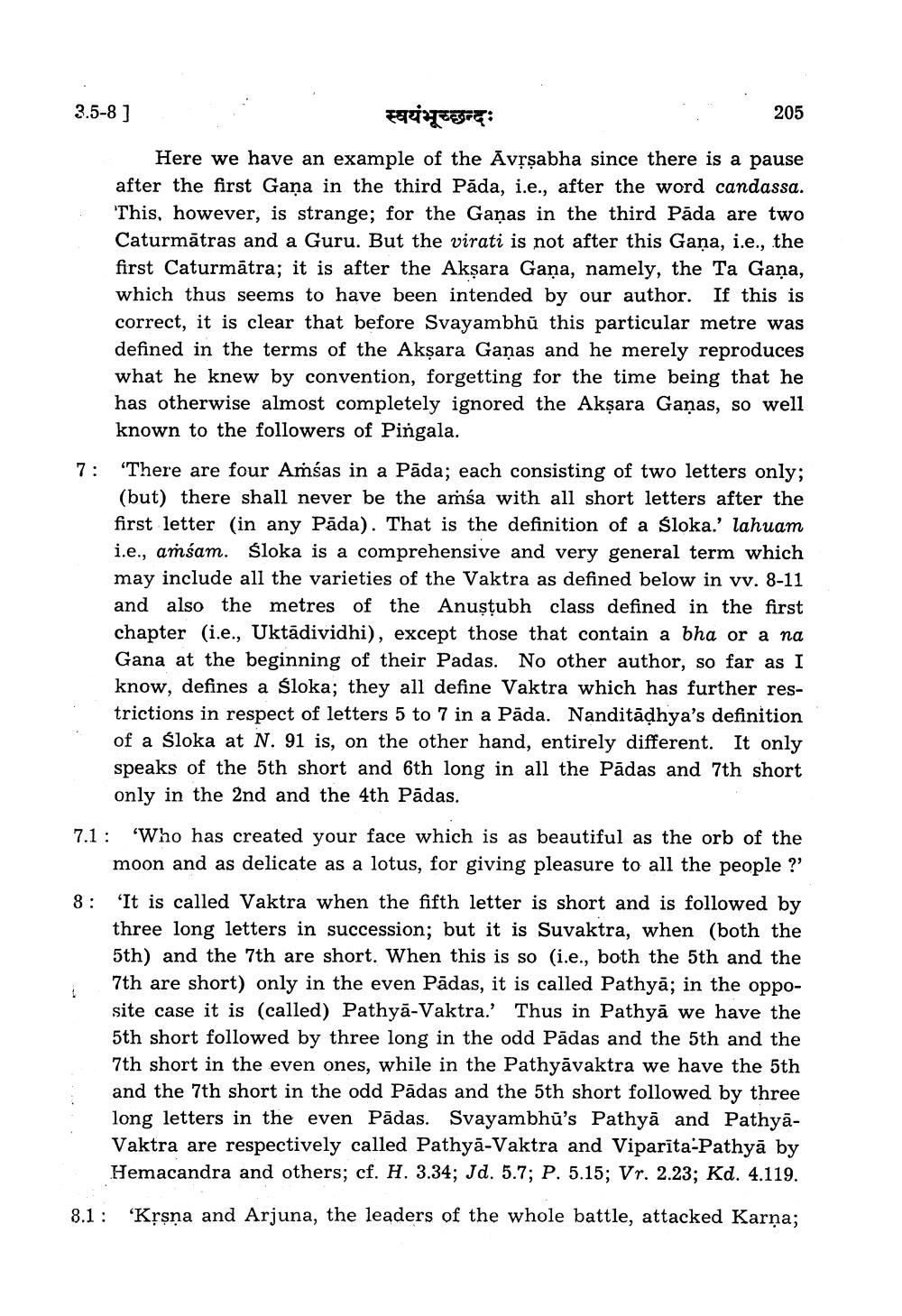________________
3.5-8 ]
स्वयंभूच्छन्दः
205
Here we have an example of the Avşsabha since there is a pause after the first Gana in the third Păda, i.e., after the word candassa. This, however, is strange; for the Gaņas in the third Pāda are two Caturmātras and a Guru. But the virati is not after this Gaņa, i.e., the first Caturmātra; it is after the Akşara Gaņa, namely, the Ta Gaņa, which thus seems to have been intended by our author. If this is correct, it is clear that before Svayambhū this particular metre was defined in the terms of the Akşara Ganas and he merely reproduces what he knew by convention, forgetting for the time being that he has otherwise almost completely ignored the Aksara Ganas, so well known to the followers of Pingala.
7: "There are four Amśas in a Pāda; each consisting of two letters only;
(but) there shall never be the amśa with all short letters after the first letter (in any Pāda). That is the definition of a śloka.' lahuam i.e., assam. śloka is a comprehensive and very general term which may include all the varieties of the Vaktra as defined below in vv. 8-11 and also the metres of the Anustubh class defined in the first chapter (i.e., Uktādividhi), except those that contain a bha or a na Gana at the beginning of their Padas. No other author, so far as I know, defines a śloka; they all define Vaktra which has further restrictions in respect of letters 5 to 7 in a Päda. Nanditāļhya's definition of a sloka at N. 91 is, on the other hand, entirely different. It only speaks of the 5th short and 6th long in all the Pādas and 7th short only in the 2nd and the 4th Pädas.
7.1: 'Who has created your face which is as beautiful as the orb of the
moon and as delicate as a lotus, for giving pleasure to all the people ?' 8: 'It is called Vaktra when the fifth letter is short and is followed by
three long letters in succession; but it is Suvaktra, when (both the 5th) and the 7th are short. When this is so (i.e., both the 5th and the 7th are short) only in the even Pādas, it is called Pathyā; in the opposite case it is (called) Pathyā-Vaktra.' Thus in Pathy, we have the 5th short followed by three long in the odd Pādas and the 5th and the 7th short in the even ones, while in the Pathyāvaktra we have the 5th and the 7th short in the odd Pādas and the 5th short followed by three long letters in the even Pädas. Svayambhū's Pathyā and PathyaVaktra are respectively called Pathyā-Vaktra and Viparīta-Pathyā by Hemacandra and others; cf. H. 3.34; Jd. 5.7; P. 5.15; Vr. 2.23; Kd. 4.119.
8.1: 'Kșsna and Arjuna, the leaders of the whole battle, attacked Karna;




